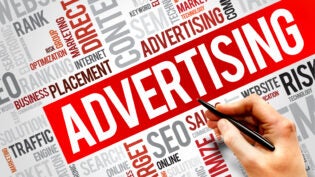
If you have, you’ll notice that even amongst darkness, that glowing object still captures your focus with its beauty.
Similarly, in a world where everyone is clamoring for your prospects’ attention, you need your content to stand out.
According to HubSpot, 49% of marketers report that increasing customer acquisition is their top priority.
Therefore, you need a competitive advantage.
In this article, we’re going to explore 15 persuasive copywriting techniques that engage leads and convert them.
So, let’s jump right in.
1. Write conversationally – one friend to another
Everyone wants to feel valued.
No one wants to feel like a faceless entity.
When you write conversationally, you’re talking to your prospect, making them feel valued.
You use words like “I” and “you” to make your prospect feel like a friend.
But do keep in mind the magnetic power of the word “you” as you write your copy.
“As long as you use words like I, you, and me, you create the feel of a personal form of communication.” – Joseph Sugarman
Furthermore, use simple words and simple sentences to create a light atmosphere.
The objective?
To present copy that’s easy to read.
It’s not about “talking down” to your reader. It’s about clarity.
Without clarity, there’s no conversation. No persuasion.
Want to see an example of conversational copy?
Check out this snippet from Levi’s website:

Image Source: Levi’s
Notice the following:
• They say “grab” instead of “get.”
• They say “your.”
• They say “head to” instead of “go to.”
• They say “how to style them” instead of “how to wear them.”
Doesn’t it feel like Levi’s is having a conversation with you?
2. Tell engaging stories
Want to transport your reader to your world?
Tell a story.
Research shows that engaging stories absorb those who listen to them.
When told strategically, a story can transport your prospect to, what Joseph Sugarman calls, a buying environment.
The objective?
To have your prospect imagine what it’s like to use your product or service.
Why?
Because when we touch an object or imagine doing so, we establish perceived ownership.
It’s the reason why Apple stores display their devices. And why car salesmen allow test-drives.
“In all my ads I try to make the prospects imagine they are holding or using my product.” – Joseph Sugarman
3. Highlight a unique value proposition
Your unique value proposition (UVP) is what you have to offer that few competitors can. It’s your edge, your distinguishable trait that others can’t replicate.
Here’s a definition of unique value proposition from Unbounce:
“Your UVP is a clear statement that describes the benefit of your offer, how to solve your customer’s needs, and what distinguishes you from the competition.”
If your offer is too common, then it’s a carbon copy of the competition. But if your offer is unique, it stands out.
That’s why you must highlight your unique value proposition. Promote it so you can boost conversion.
Check out this example of a unique value proposition from Mantis Research:

Mantis Research’s unique value proposition is that they combine data and story for their content marketing research.
4. Speak in your prospect’s language
Have you ever read copy from a website or an advertisement and said to yourself, “Wow, it’s like they read my mind.”?
Well, it’s because the copywriter did read your mind. She used your words to communicate with you. She spoke your language.
And research shows how effective this can be.
So, how can you get the inside scoop on your prospect’s dialect?
Here are some ways:
- Read Amazon reviews
- Scour online forums like Reddit
- Interview your current clients
5. Use the power of imagination
There’s a thin line between imagination and reality.
Hold on, let me rephrase that.
If there is a line, it’s blurred.
According to research, when you imagine something, your mind and body interpret it as reality.
Sounds crazy?
Well, we know this is true, firsthand.
Let me explain.
Have you ever watched a scary film and felt your heart pounding faster than a techno beat?
Although you were watching an imaginary world, your body was going through the same reactions as if you were one of the characters in the film.
As a copywriter, use words like “imagine” and “picture this” to invite your prospect to your imaginary world – a world where their life has improved after using your product or service.
And if done effectively, your product or service will become part of their reality.
6. Use power verbs to strengthen your copy
Verbs initiate action. They direct your readers, taking them on a journey with you as their guide.
But some verbs are more potent than others.
Instead of saying: Tom meticulously researched the financial statement.
You can say: Tom dissected the financial statement.
Instead of saying: I vehemently emphasized my point.
You can say: I hammered my point.
“The secret of persuasion lies in our skillful use of action words. The magic of advertising is in the verbs.” – Roy Williams
Check out this copy from Oreo:

Image Source: Snack Works
Notice how Oreo uses power verbs like “twist,” “dunk,” “please,” and “delight.”
7. Use repetition
Ever hear a song on the radio you thought was awful? But then, you kept hearing it repeatedly, and suddenly, you found yourself liking it?
That’s the power of repetition.
Or have you seen a pizza commercial frequently? Then, next thing you know, you’re salivating, calling up your local pizza shop?
That’s the power of repetition.
Well, you can harness the power of repetition using your words.
Research shows that moderate repetition within a message can make it more persuasive.
Here’s an example of copy that uses repetition:

Image Source: Häagen-Dazs
Häagen-Dazs repeatedly uses the word “soft.”
“Soft” is a sensory word that connotes comfort. Perfect, right? Especially since Häagen-Dazs appeals to people who like comfort food. (By the way, I’m one of those people.)
Stay tuned for more details on sensory words.
8. Offer a money-back guarantee
Your offer sounds appealing, but your prospects don’t know if they can trust you. They’ve been burned before, and now they need armor.
The solution?
A money-back guarantee.
With a money-back guarantee, the seller assumes the risk. And the buyers feel comfortable knowing they have an exit strategy.
Also, keep in mind that many of your customers won’t even consider your offer without a money-back guarantee.
The money-back guarantee conveys that the seller is confident in their offer. In turn, this makes the buyer confident.
“You must convey the idea that you are shouldering most of the risk. If you can transfer the risk from the buyer to yourself, that removes the barrier, it removes the fear and they’re free to do what they most want to do—buy your product.” – Ray Edwards
In his book How to Write Copy That Sells, Ray Edwards states that “in almost every case, the longer the guarantee the lower the refund rate.”
Here is an example of a money-back guarantee from AWAI:

Image Source: AWAI
Notice how AWAI uses words like “No-Risk” and “satisfaction,” along with phrases like “promptly refunded” and “no questions asked.”
9. Insert sensory words
Sensory words trigger your prospect’s imagination. It helps them experience your words.
Brain imaging research shows that when we hear sensory words like “rough,” the part of our brain (the parietal operculum) that senses texture through touch is activated.
So, when you read copy that mentions a “rough morning,” you’ll feel it on a deeper level than if it had said “bad morning.”
But what if you want your copy to convey a wholesome feeling?
Let’s check out this snippet from Minute Maid’s website:

Image Source: Minute Maid
Notice how Minute Maid used the word “smooth” to convey a pulp-free drinking experience.
10. Plant seeds of curiosity
It’s not enough to attract your prospects, you must also keep them engaged.
To do so, you can use a technique introduced by Joseph Sugarman called seeds of curiosity.
“These seeds of curiosity cause you to subconsciously continue reading even though you might be at a point in the copy where the copy slows down.” – Joseph Sugarman
Some copywriters call this technique “bucket brigades.”
Here are some examples:
“And that’s not all.”
“Let me explain.”
“But there’s more.”
By planting seeds of curiosity, you help establish what Joseph Sugarman calls a slippery slide. When you create a slippery slide, you make it hard for your reader to pull away from your copy. Their curiosity has them spellbound.
Why is curiosity so potent?
George Loewenstein theorized that curiosity stems from information gaps. When we lack information, we develop a strong desire to fill our gap with knowledge.
So, when you plant seeds of curiosity, you open information gaps.
But as Joseph Sugarman states in The Adweek Copywriting Handbook, use the seeds of curiosity technique sparingly. If you use this technique too often within your copy, it won’t be as effective.
11. Showcase testimonials to establish social proof
As children, we were all told not to trust strangers. And as adults, we still have that mentality.
To gain your prospect’s trust, you must earn it.
No one wants to have their hard-earned money snatched from them.
Prospects like to double-check they’re making the right decision. That your offer is legit. So, they look for social proof to guide them.
And this is where testimonials come in.
Testimonials prove that someone has benefited from your offer; that others vouch for your product or service.
If a majority of people believe something, the minority fall in line. Solomon Asch’s experiment proved that.
Indeed, we value the opinions of our peers.
But what’s the most effective way to use testimonials?
In the book Yes! 50 Scientifically Proven Ways to Be Persuasive, Noah J. Goldstein states that testimonials are more useful when they come from someone similar to your prospect.
Want to see an example of testimonials as social proof?
Check out this snippet from Basecamp’s homepage:

Image Source: Basecamp
Basecamp’s website displays testimonials that address the needs of their prospects.
12. Use scarcity to create urgency
The last technique we discussed was social proof, one of Robert Cialdini’s principles of persuasion from his book Influence: The Psychology of Persuasion.
Let’s discuss another principle of persuasion: scarcity.
Research shows that scarcity works, whether you’re using it for time or supply.
Here are a few scarcity terms:
- “In short supply”
- “For a limited time only”
Why is scarcity so effective?
Because it creates a sense of urgency. It motivates your prospect to purchase. Immediately.
Scarcity capitalizes on your prospect’s fear of missing out.
Check out this example of scarcity from Tom Ford:

Image Source: Tom Ford
Tom Ford’s website uses the “limited time” scarcity tactic. But if you’re a Tom Ford shopper, you’re wondering how long the sale lasts.
13. Employ words that trigger emotions
Customers ignore stales words.
So, to avoid dull copy, use words that trigger emotions. In turn, you’ll galvanize your prospects, making them excited about your offer.
Why must you appeal to emotions? Research shows that it’s impossible to make decisions without them.
“We buy on emotion and justify with logic.” – Joseph Sugarman
Let’s explore the emotional pull of the word “thorn.”
When you hear that word, you may immediately think “sharp,” “prickly,” “pain.” Terms associated with discomfort.
Thus, the phrase “a thorn in my side” triggers emotions you’d want to avoid.
Now, let’s flip the script.
Let’s discuss “love.”
When you hear the word “love,” you experience warm feelings.
You may think of your spouse, your parents, your children, your best friends.
Or the first time you fell in love.
Either way, the word “love” is a strong emotional word.
Now, check out this copy from Apple’s website:

Image Source: Apple
Apple connects an emotional word with its iPhone 11. Also, potent use of personification.
14. Use the contrast principle
In his book Influence: The Psychology of Persuasion, Robert Cialdini mentions an experiment where students take turns sitting in front of three buckets of water: one cold, one at room temperature, one hot.
Each student received the same instructions:
Place one hand in cold water, and the other in hot water.
Then, place both hands in the room-temperature water.
Surprisingly, each hand had a different reaction to the room-temperature bucket. The hand that previously was in cold water felt hot, and the hand that was in hot water felt cold.
The moral of this story?
How you view something is affected by how you contrast it with something else.
This is known as the contrast principle.
Want to see how it’s used in copywriting?
Check out this example from Ted Nicholas:

Image Source: Ted Nicholas
Notice how Ted lists the regular price ($777.00) and the special price ($297).
The special price is $480 less than the regular price. So, the people who bought this product feel it’s worth more than they paid.
By listing the regular price, Ted placed his prospect’s hands in hot water, then cooled them with his special price.
Also, Ted offers a money-back guarantee.
So, he used two persuasive copywriting techniques discussed in this article.
15. Raise objections, then resolve them
A salesperson has a direct conversation with their prospect. If their prospect has questions, the salesperson can address them.
As copywriters, we must raise the concerns and questions that our prospects may have, then resolve them.
If we don’t, it’s the equivalent of dodging a prospect’s questions about your offer.
“If you sense that there might be an objection and you ignore it, it’s like ignoring that consumer. You won’t get away with it. The consumer is too sharp and will not buy.” – Joseph Sugarman
Check out this example from BMW’s website:

Image Source: BMW
BMW understands that when most people think of BMW, they think expensive.
Check out where BMW takes you after you click the “Learn More” button:

Image Source: BMW
Notice how BMW says its pricing is “more competitive with local repair shops than ever.” And they mention “transparent, up-front pricing.” They even refer to their repair service as “value service.” All efforts designed to resolve objections prospects may have about the price.
Your words must glow
You know why we’re so fascinated by fireflies?
Because they glow in the dark without the aid of electricity.
They capture your attention – while other insects blend with the background, trapped in obscurity.
As a copywriter, your job is to transform words into fireflies.
Why?
Because you’re not aided by the power of talking to your customers.
You must sell with the written word.
So, are you ready to make your copy glow?
uthor: Darek Black is a copywriter, certified content marketer, and the co-founder of Content Stride, a copywriting and graphic design services company. For clients, he writes engaging content designed to attract customers. Connect with him on LinkedIn and Twitter.












